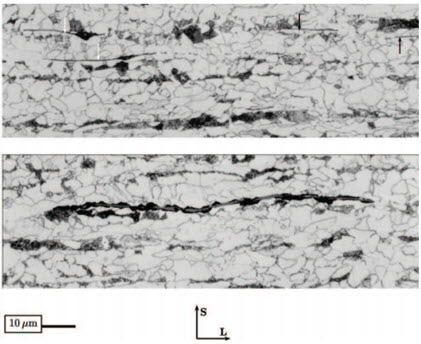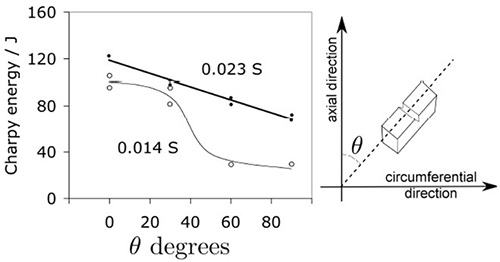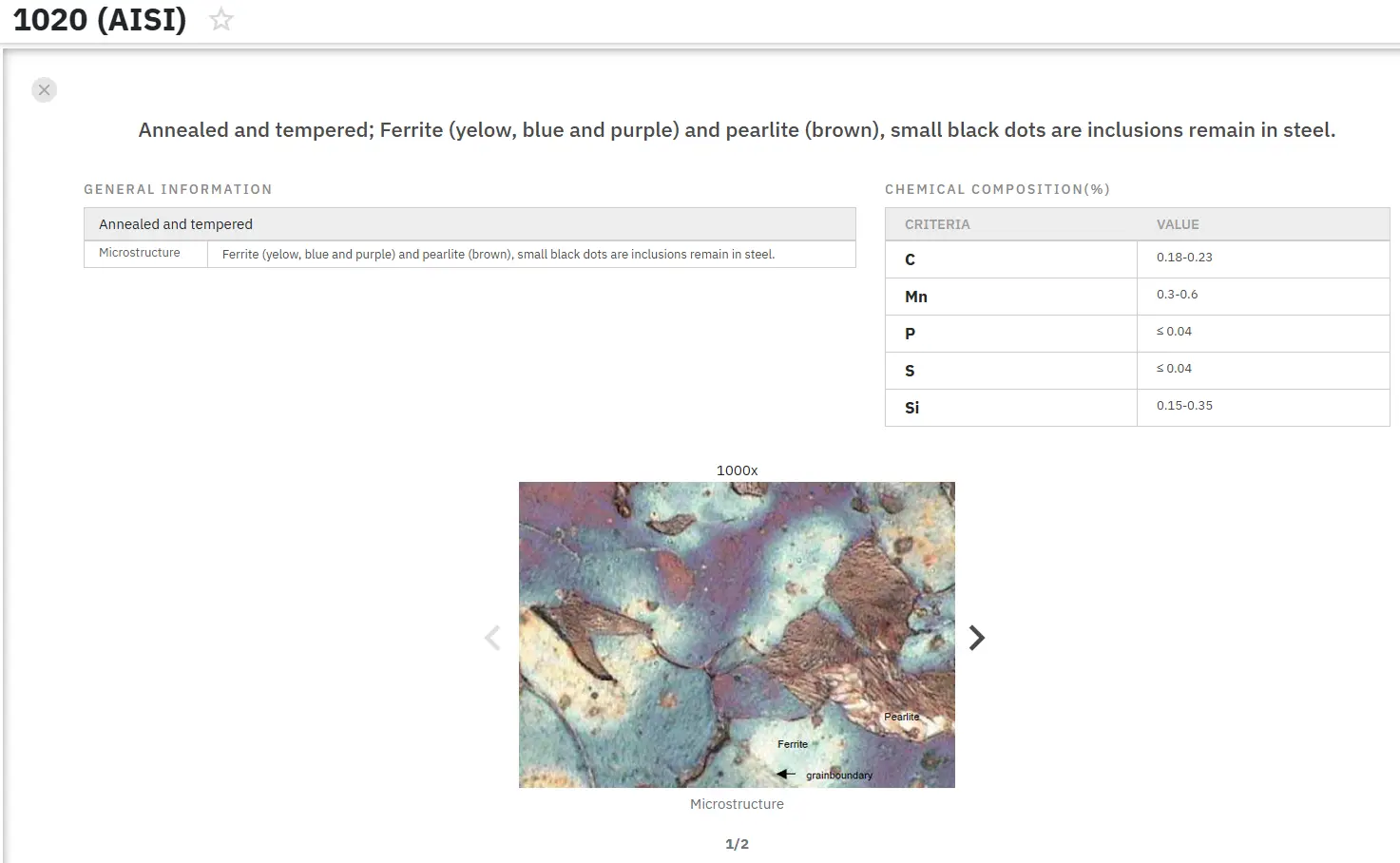Manganese Sulphide Inclusions in Steel: Part Two
Abstract
Non-metallic inclusions represent a persistent challenge in steel manufacturing, adversely affecting mechanical properties and overall material performance. While sulfur presence significantly improves steel machinability, deformable manganese sulfide (MnS) inclusions resulting from rolling and forging processes create anisotropy in mechanical and fatigue properties. Metal forming operations cause microstructural changes and MnS inclusion elongation, leading to different effective areas when loaded along various axes. This anisotropic behavior affects both fatigue resistance and monotonic properties. Research on rail steels demonstrates that MnS inclusions, initially spherical during solidification, transform into elongated shapes through rolling processes. These deformed inclusions become potential crack initiation sites, particularly near surfaces where deformation is most pronounced. Micro-hardness testing reveals MnS inclusions possess significantly lower hardness compared to the steel matrix, contributing to their preferential deformation behavior.
Introduction to Non-Metallic Inclusions and Steel Performance
Non-metallic inclusions constitute an ever-present challenge in steel production, consistently compromising mechanical properties and diminishing overall material performance. These microscopic features, while often unavoidable in conventional steelmaking processes, significantly influence the final characteristics of steel products across diverse applications.
The relationship between sulfur content and steel behavior presents a complex engineering trade-off. Although sulfur presence substantially enhances steel machinability through improved chip formation and tool life, the resulting deformable MnS inclusions introduce significant complications during subsequent metal forming operations such as rolling and forging.
Anisotropic Properties from MnS Inclusion Deformation
Microstructural Changes During Metal Forming
Metal forming processes, particularly rolling and forging operations, frequently produce anisotropic microstructures accompanied by significant elongation of deformable MnS inclusions. This transformation fundamentally alters the mechanical behavior of the steel, creating directional dependencies in material properties.
The elongated MnS inclusions present different effective cross-sectional areas when subjected to loading along different axes. This geometric variation directly results in anisotropy of both fatigue resistance and monotonic mechanical properties, creating challenges for design engineers who must account for directional strength variations.

Figure 1: Typical microstructure of ferritic grains, pearlite bands, and the characteristic shape of flattened MnS inclusions (indicated by arrows) and mixed oxide-MnS inclusions (white arrows) in both ferrite and pearlite regions.
Impact Energy and Anisotropic Behavior
Experimental data demonstrates the complex relationship between sulfur content and anisotropic behavior in steel materials. Interestingly, steels with higher sulfur content often exhibit reduced degrees of anisotropy compared to low-sulfur alternatives. This counterintuitive phenomenon occurs because sulfides in low-sulfur alloys tend to undergo more severe elongation during forming processes.

Figure 2: Charpy energy values as a function of orientation and sulfur content (wt%) for A106 grade B steel pipe, with all samples arranged to undergo ductile failure modes
These observations emphasize the critical role of inclusions in nucleating and linking voids during failure processes. Since the illustrated data represents ductile failure modes, the observed anisotropy directly correlates with inclusion shape and distribution. However, sulfides may not distribute uniformly throughout the steel matrix, making correlations between properties and average sulfur concentration less predictable.
MnS Inclusions in Rail Steel Applications
Composition and Initial Characteristics
Comprehensive investigations of rail steel applications reveal numerous inclusion types present in commercial grades. Research by A. Chard examined UK 220 and UK 260 steel grades, providing detailed compositional analysis of these critical infrastructure materials.
Table 1. Detailed composition (wt.%) of both 220 and 260 grade rail steels for reference and comparison purposes.
| Steel | C | Si | Mn | S | P | Cr | Mo | Ni | Cu | Al | N | O | V | Ti |
| UK 220 | 0.50 0.60 |
0.20 0.60 |
1.00 1.25 |
0.008 0.025 |
MAX 0.025 |
MAX 0.15 |
MAX 0.02 |
MAX 0.10 |
MAX 0.15 |
MAX 0.004 |
MAX 0.008 |
MAX 20ppm |
MAX 0.03 |
MAX 0.025 |
| UK 260 | 0.60 0.82 |
0.15 0.58 |
0.65 1.25 |
0.008 0.025 |
MAX 0.025 |
MAX 0.15 |
MAX 0.02 |
MAX 0.10 |
MAX 0.15 |
MAX 0.004 |
MAX 0.01 |
MAX 20ppm |
MAX 0.03 |
MAX 0.025 |
During initial solidification, inclusions appear as spherical particles with varying diameters throughout the steel matrix. Studies consistently demonstrate that steels with elevated sulfur contents contain higher number densities of MnS inclusions, directly correlating chemical composition with inclusion population.
The 260 grade steels, with compositions detailed in the referenced table, typically contain fewer but larger inclusions compared to 220 grade rail steels. These inclusions orient preferentially in the longitudinal direction, establishing the foundation for subsequent deformation behavior during service.
Rolling Process Effects on Inclusion Morphology
The rolling process used to achieve characteristic rail profiles dramatically transforms inclusion geometry from spherical to elongated oval or cigar-shaped configurations. This morphological change occurs as the steel undergoes plastic deformation, with inclusions flowing along the primary deformation direction.
Most inclusions in rail steel orientate longitudinally and exhibit significant size variations throughout the cross-section. This variation creates heterogeneous mechanical properties that must be considered during rail design and service life prediction.
Service Performance and Inclusion Behavior
Surface Deformation and Crack Initiation
During rail service, surface regions experience the most severe deformation, directly affecting inclusion behavior and morphology. The inclusions undergo non-uniform deformation patterns, with longitudinal loads typically exceeding transverse loads in magnitude and frequency.
This loading pattern results in flattened, pancake-shaped inclusions near the rail surface, which subsequently become preferred crack initiation sites. The large deformation experienced by these inclusions associates most strongly with MnS inclusions due to their high ductility compared to ceramic inclusions such as SiO2 and Al2O3.
Micro-Hardness Testing and Material Characterization
Comparative Hardness Analysis
Micro-hardness testing provides quantitative insight into the mechanical behavior differences between MnS inclusions and the surrounding steel matrix. Research demonstrates that MnS inclusions embedded within a pearlitic matrix exhibit micro-hardness values of approximately 175 kg/mm², significantly lower than the surrounding material.
In contrast, the pearlitic steel matrix demonstrates micro-hardness values of 322 kg/mm² under identical testing conditions (20g applied load). Pure MnS samples show micro-hardness values of 170 kg/mm², validating the accuracy of inclusion hardness measurements and confirming the substantial hardness differential.
Complex Inclusion Compositions
The micro-hardness values cited represent pure MnS behavior, though actual service conditions present more complex scenarios. Depending on steel sulfur content and specific steelmaking processes, additional elements may incorporate into MnS inclusions, altering their mechanical behavior and deformation characteristics.
These complex inclusions can consist of ductile MnS components combined with brittle phases such as alumina-silicate inclusions. Alternatively, inclusions may feature ductile MnS cores surrounded by brittle phases, or conversely, brittle cores surrounded by ductile MnS material. Each configuration presents unique mechanical behavior under applied loading conditions.
Engineering Implications and Performance Considerations
The comprehensive analysis of MnS inclusions in rail steel applications clearly demonstrates that these features deform more readily than the surrounding steel matrix under applied loads. This preferential deformation causes inclusions to flatten and elongate, creating potential failure initiation sites that must be considered in structural design and maintenance planning.
Understanding inclusion behavior proves essential for optimizing steel composition, processing parameters, and service performance prediction. The balance between improved machinability from sulfur additions and the resulting anisotropic properties requires careful consideration in each specific application.
Conclusion
Manganese sulfide inclusions significantly influence steel mechanical properties through their deformation behavior during metal forming and service loading. While sulfur additions improve machinability, the resulting anisotropic properties require careful consideration in design applications. Understanding inclusion morphology, distribution, and mechanical behavior enables engineers to optimize material selection and processing parameters for specific applications, particularly in critical infrastructure components such as railway systems where long-term reliability remains paramount.
数千種類の金属組織図を即座に検索!
Total Materia Horizon には、さまざまな金属合金、国別規格、熱処理条件に対応した豊富な金属組織画像コレクションが収録されています。

Total Materia Horizonの無料テストアカウントを開設して、120カ国以上、50万人を超えるユーザーのコミュニティに参加しましょう!